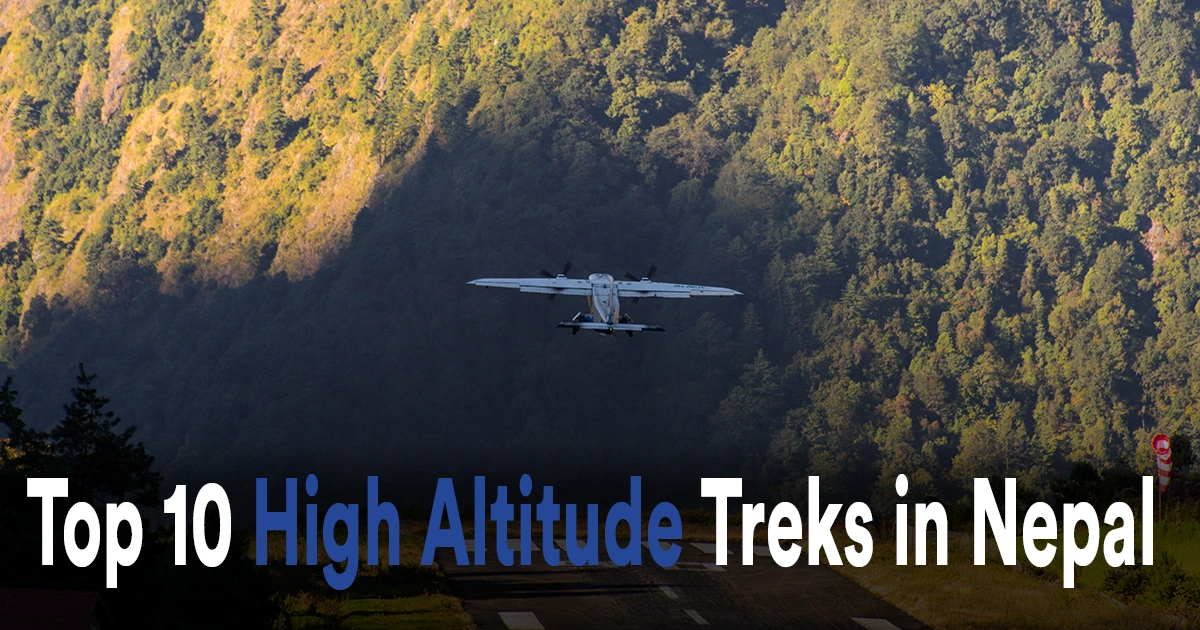Nepal – the land of towering peaks, ancient cultures, and breathtaking landscapes is every trekker’s dream destination. For adventure enthusiasts and nature lovers alike, high-altitude treks in Nepal offer an unmatched blend of thrill, serenity, and cultural immersion. From the iconic slopes of Everest to the hidden valleys of Mustang and Nar-Phu, these trails are more than just a journey, they’re a life-changing experience that challenges your limits while rewarding you with awe-inspiring views and unforgettable memories.
If you’ve been dreaming of standing amid snow-capped giants, watching the sunrise over Himalayan ridges, or exploring remote villages steeped in centuries-old traditions, 2025 and 2026 are perfect years to plan your adventure. With trekking infrastructure improving, guided tours becoming more accessible, and travel regulations stabilizing, there has never been a better time to explore these majestic trails.
In this guide, we’ll take you through the top 10 high-altitude treks in Nepal that you absolutely shouldn’t miss. Whether you’re a seasoned trekker seeking challenging passes like the Everest Three Passes or Kanchenjunga Base Camp, or a first-time adventurer looking for iconic yet manageable trails like Everest Base Camp or Annapurna Circuit, this blog has something for everyone. Along the way, we’ll cover practical tips, best seasons, essential gear, and insights to help you plan a safe and unforgettable journey.
So lace up your hiking boots, pack your sense of adventure, and get ready to explore some of the most spectacular high-altitude trekking routes Nepal has to offer.
Which is the top 10 you ask?
1. Everest Base Camp Trek
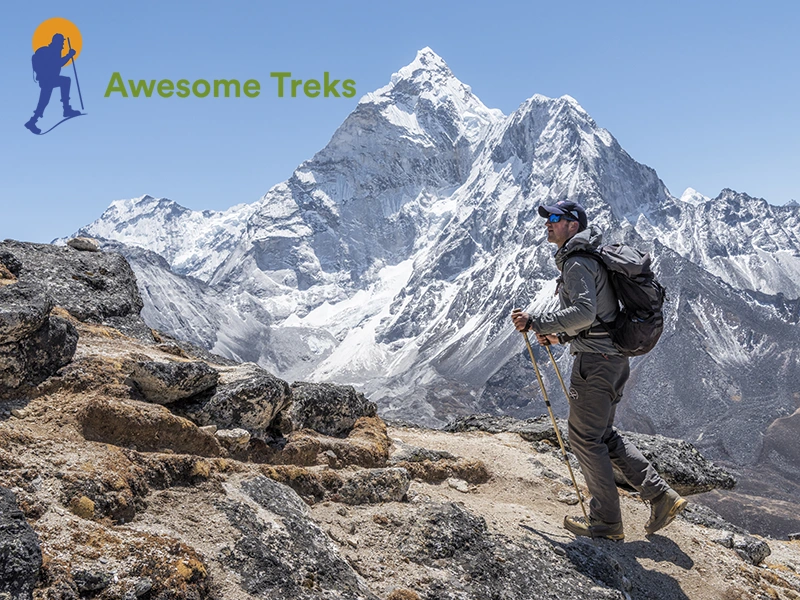
There’s a reason the Everest Base Camp (EBC) Trek is a bucket-list adventure for trekkers worldwide. Standing at 5,364 m, EBC brings you face-to-face with the majestic Everest, while the surrounding peaks – Nuptse, Lhotse, and Ama Dablam, create a dramatic Himalayan panorama that few places on Earth can match.
Duration & Difficulty:
- Duration: 12-14 days
- Difficulty: Moderate to strenuous
- Best Season: Spring (March-May) and Autumn (September-November)
Why You’ll Love It:
Trek through charming Sherpa villages like Namche Bazaar, witness the spiritual serenity of Tengboche Monastery, and cross iconic suspension bridges over roaring rivers. The sunrise from Kala Patthar is a soul-stirring reward for every step you take.
Permits Required:
- Sagarmatha National Park Permit
- TIMS Card (Trekkers’ Information Management System)
Practical Tips:
- Take time to acclimatize at Namche Bazaar to prevent altitude sickness.
- Dress in layers – temperatures swing wildly from morning to evening.
- Keep hydrated and enjoy local meals to maintain energy on the trail.
2. Everest Three Passes Trek
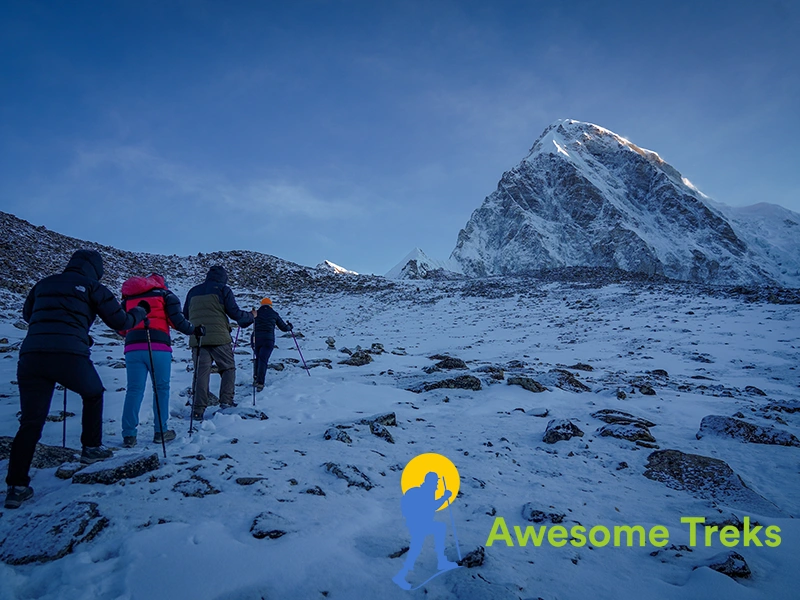
For adventurers seeking the ultimate Everest experience, the Everest Three Passes Trek delivers. This challenging circuit links Everest Base Camp with the stunning Gokyo Lakes, crossing three formidable high passes: Kongma La (5,535 m), Cho La (5,430 m), and Renjo La (5,340 m).
Duration & Difficulty:
- Duration: 18-20 days
- Difficulty: Strenuous
- Best Season: Spring and Autumn
Why You’ll Love It:
Expect awe-inspiring glacier crossings, remote Sherpa villages, and the serene turquoise waters of Gokyo Lakes. The panoramic view from Gokyo Ri rivals anything you’ll see in the Himalayas – an unforgettable reward for your effort.
Practical Tips:
- This trek is for experienced trekkers with strong fitness levels.
- Trekking poles and sturdy boots are essential for snowy passes.
- Hiring an experienced guide ensures safety on the high passes.
3. Annapurna Circuit Trek
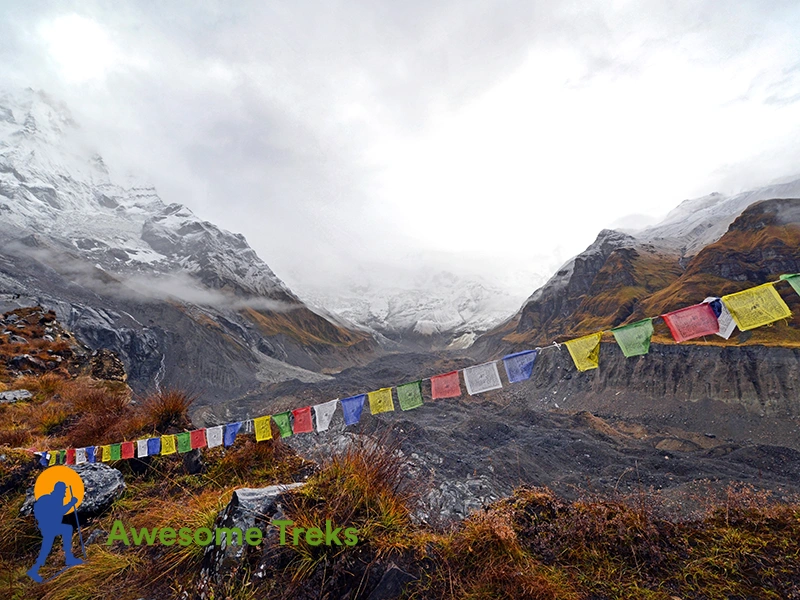
The Annapurna Circuit Trek is a classic journey through Nepal’s diverse landscapes – from lush subtropical forests to stark alpine deserts. It’s a feast for the senses, offering sweeping mountain vistas, cascading waterfalls, and terraced villages tucked along the hillsides.
Duration & Difficulty:
- Duration: 15-18 days
- Difficulty: Moderate to strenuous
- Best Season: Spring (March-May) and Autumn (September-November)
Why You’ll Love It:
Cross the iconic Thorong La Pass (5,416 m) and witness the Annapurna and Dhaulagiri ranges in all their glory. Experience local cultures in villages like Manang and Muktinath, and savor traditional Nepali cuisine at cozy teahouses along the trail.
Permits Required:
- Annapurna Conservation Area Permit (ACAP)
- TIMS Card
Practical Tips:
- Acclimatize properly before attempting Thorong La Pass.
- Carry warm clothing for high-altitude nights.
- Respect local customs when visiting sacred sites.
4. Manaslu Circuit Trek
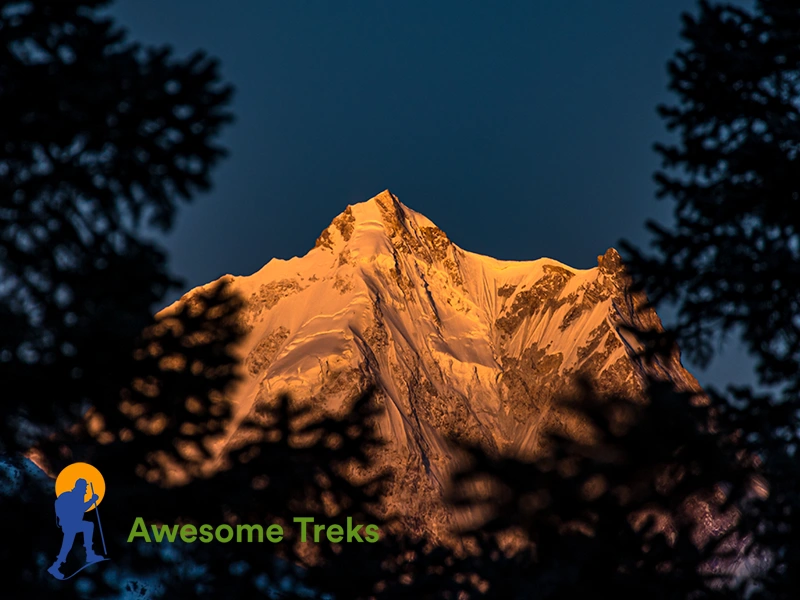
The Manaslu Circuit Trek is a hidden gem, less crowded but equally breathtaking. Nestled in the remote north-central region, it offers a mix of rugged trails, glacial landscapes, and ancient Tibetan-influenced villages.
Duration & Difficulty:
- Duration: 14-16 days
- Difficulty: Strenuous
- Best Season: Spring and Autumn
Why You’ll Love It:
Cross the Larkya La Pass (5,160 m) and feel a sense of accomplishment amid snow-capped peaks. Encounter warm-hearted locals, monasteries, and serene valleys that feel untouched by time.
Permits Required:
- Manaslu Restricted Area Permit
- TIMS Card
Practical Tips:
- This trek is ideal for trekkers with previous high-altitude experience.
- Allow extra time for acclimatization and rest days.
- Hire a local guide for navigation and cultural insights.
5. Gokyo Lakes & Gokyo Ri Trek
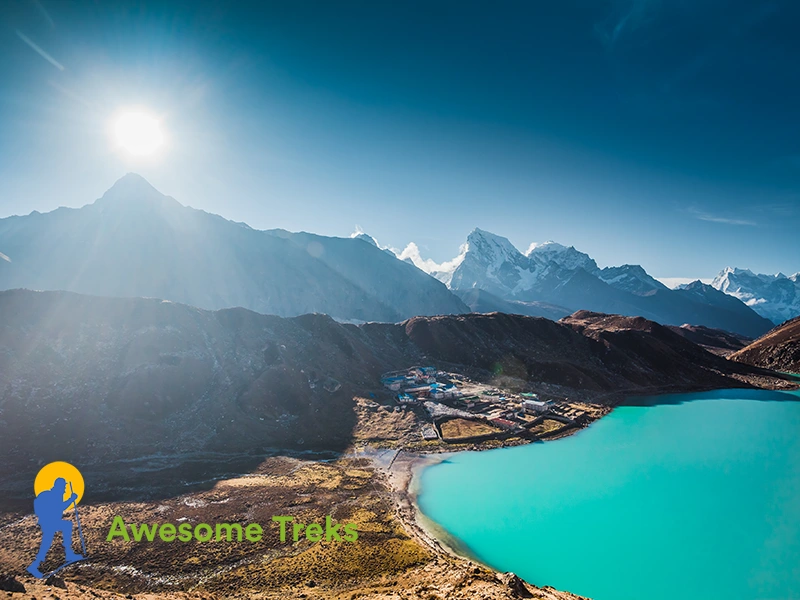
A peaceful alternative to the classic EBC trek, the Gokyo Lakes Trek rewards trekkers with stunning turquoise glacial lakes and a climb to Gokyo Ri (5,357 m) for arguably the best panoramic view of Everest, Cho Oyu, and other Himalayan giants.
Duration & Difficulty:
- Duration: 12-14 days
- Difficulty: Moderate to strenuous
- Best Season: Spring and Autumn
Why You’ll Love It:
Marvel at the vibrant lakes, cross the challenging Cho La Pass (5,420 m), and enjoy quiet trails that are far less crowded than the main EBC route.
Permits Required:
- Sagarmatha National Park Permit
- TIMS Card
Practical Tips:
- Carry crampons for icy sections near Cho La Pass.
- Plan extra days in case of weather delays.
- Enjoy the serenity of Gokyo Valley without the crowds.
6. Upper Mustang Trek
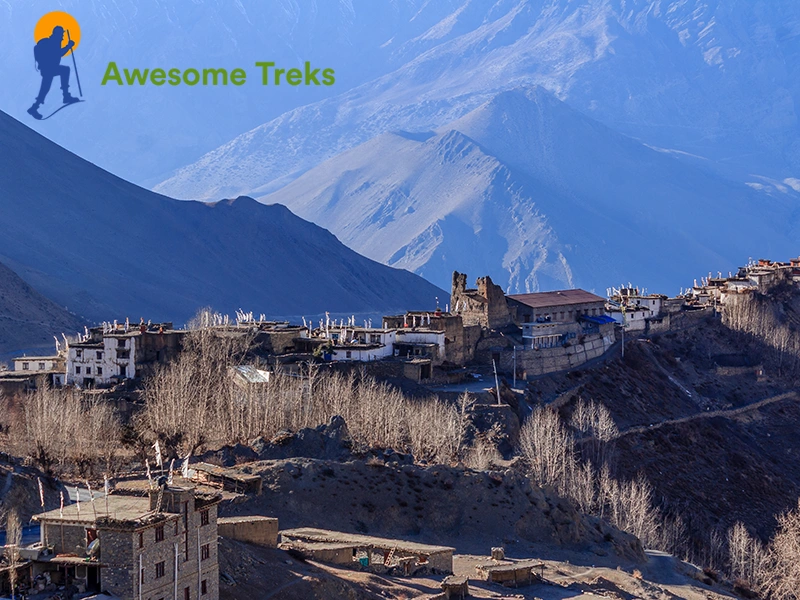
Upper Mustang, often called the “Forbidden Kingdom,” is a desert-like Himalayan region steeped in Tibetan culture. Its stark cliffs, ancient monasteries, and remote villages give trekkers a sense of stepping back in time.
Duration & Difficulty:
- Duration: 10-12 days
- Difficulty: Moderate
- Best Season: Spring (March-May) and Autumn (September-October)
Why You’ll Love It:
Explore Lo-Manthang, the walled capital, witness ancient murals, and experience the vibrant Tiji Festival if your timing is right. The trail offers surreal landscapes, red cliffs, and vast desert valleys unlike any other in Nepal.
Permits Required:
- Upper Mustang Restricted Area Permit
- Special restricted area fee applies
Practical Tips:
- Travel with a guide – entry to Upper Mustang is restricted.
- Carry cash as ATMs are unavailable in the region.
- Acclimatize gradually for high-altitude valleys and passes.
7. Kanchenjunga Base Camp Trek
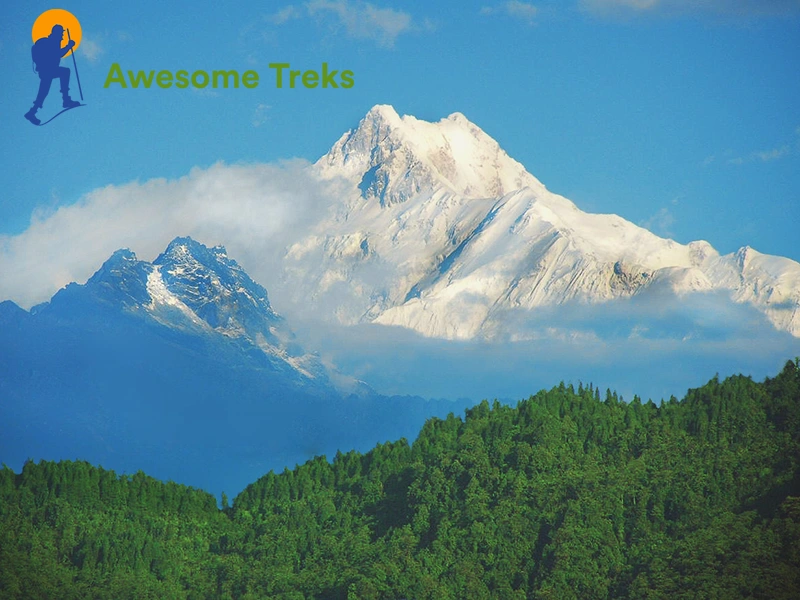
The Kanchenjunga Base Camp Trek is for adventurers seeking solitude, spirituality, and raw Himalayan beauty. As the third-highest peak in the world, Kanchenjunga’s massive presence dominates this remote region.
Duration & Difficulty:
- Duration: 20-24 days
- Difficulty: Strenuous
- Best Season: Spring and Autumn
Why You’ll Love It:
Trek through untouched forests, cross high passes, and witness traditional Limbu and Sherpa culture. The Base Camp offers close-up views of Kanchenjunga’s awe-inspiring glaciers and towering ridges.
Permits Required:
- Kanchenjunga Conservation Area Permit
- Restricted area permit required
Practical Tips:
- This trek requires strong physical fitness and prior trekking experience.
- Hire a local guide familiar with the region.
- Carry enough food, water, and warm clothing due to limited lodges.
8. Makalu Base Camp Trek
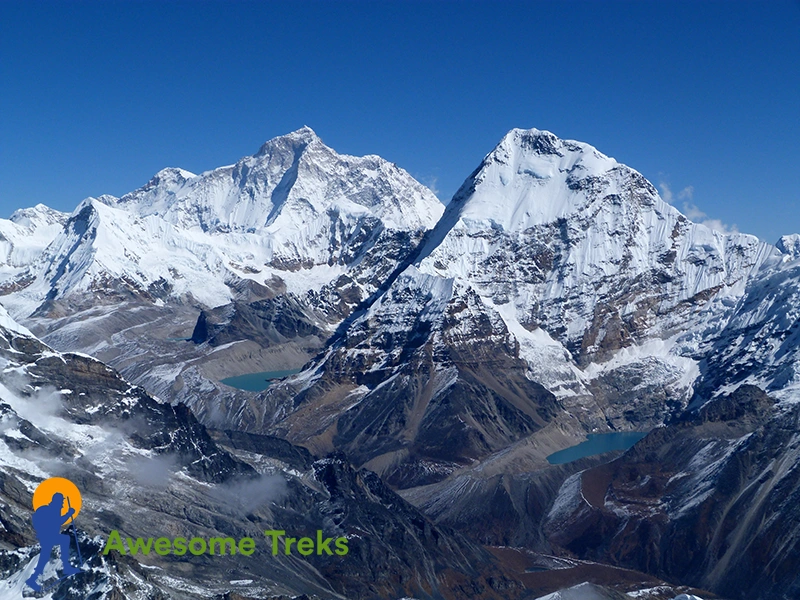
Makalu Base Camp Trek takes you through lush forests, alpine meadows, and rugged high-altitude terrain. With fewer crowds, it’s perfect for trekkers seeking peace and unspoiled Himalayan beauty.
Duration & Difficulty:
- Duration: 18-20 days
- Difficulty: Strenuous
- Best Season: Spring and Autumn
Why You’ll Love It:
Enjoy views of towering peaks like Makalu (8,485 m), Chamlang, and Baruntse. Cross thrilling high passes, stay in remote villages, and witness traditional Sherpa hospitality along the way.
Permits Required:
- Makalu Barun National Park Permit
- TIMS Card
Practical Tips:
- Strong acclimatization is essential due to high passes.
- Carry trekking poles for glacier crossings.
- Plan extra days for weather delays.
9. Rolwaling Valley Trek
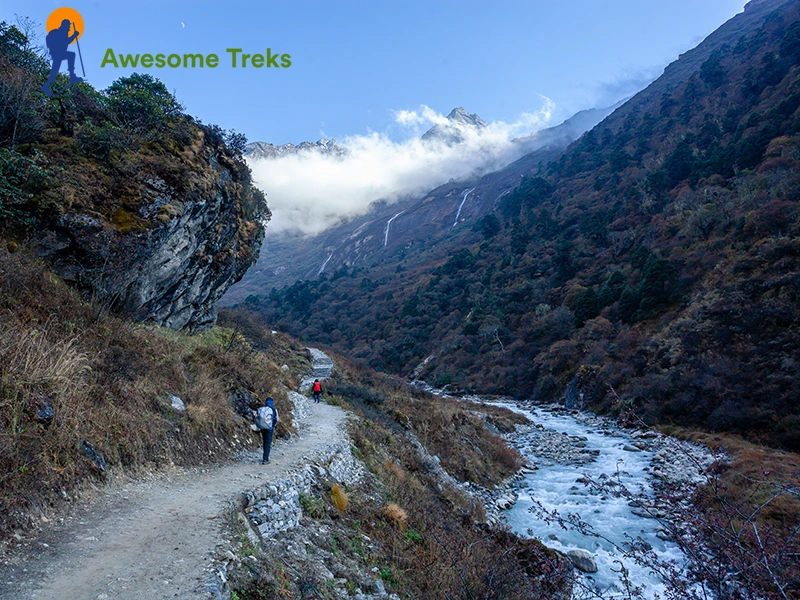
The Rolwaling Valley Trek is a hidden gem offering tranquility, rugged terrain, and the challenge of Tashi Lapcha Pass (5,338 m). It’s perfect for those seeking solitude and dramatic mountain views.
Duration & Difficulty:
- Duration: 14-16 days
- Difficulty: Strenuous
- Best Season: Spring and Autumn
Why You’ll Love It:
Explore remote villages, witness wild landscapes, and enjoy panoramic views of the Rolwaling and Everest ranges. This off-the-beaten-path trek rewards effort with serenity and adventure.
Permits Required:
- Sagarmatha National Park Permit
- TIMS Card
Practical Tips:
- Prior high-altitude trekking experience recommended.
- Hire a guide for safe navigation and local insights.
- Carry sufficient warm clothing for the high passes.
10. Nar-Phu Valley Trek
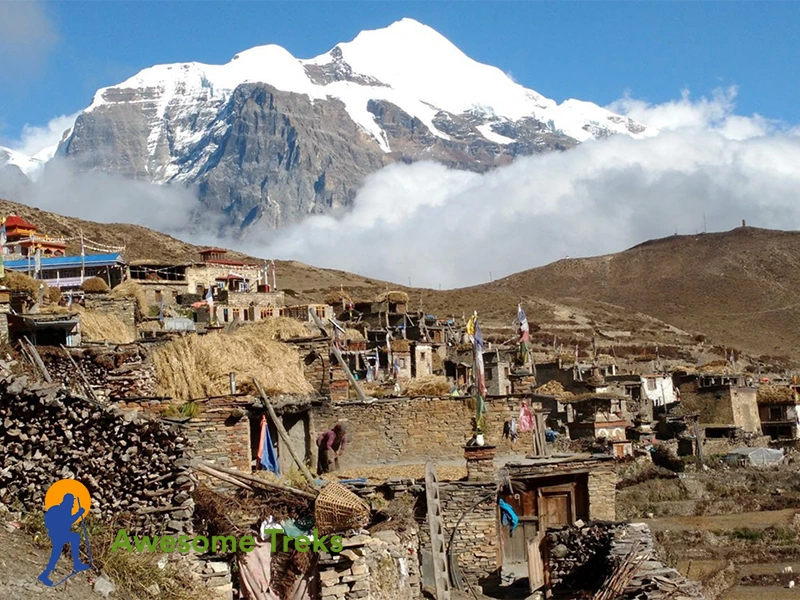
The Nar-Phu Valley Trek is a hidden Himalayan treasure, combining cultural immersion with high-altitude adventure. It lies between Annapurna and Manaslu, offering breathtaking landscapes with minimal crowds.
Duration & Difficulty:
- Duration: 12-14 days
- Difficulty: Strenuous
- Best Season: Spring and Autumn
Why You’ll Love It:
Cross high passes, explore Buddhist shrines, and experience the traditional lifestyles of Nar and Phu villages. Stunning mountain vistas and quiet trails make this trek a rewarding escape from the usual tourist routes.
Permits Required:
- Annapurna Conservation Area Permit (ACAP)
- Restricted area permit for Nar-Phu
- TIMS Card
Practical Tips:
- Trek with a guide familiar with the Nar-Phu Valley.
- Allow extra days for acclimatization and weather delays.
- Carry cash, as teahouses are limited and remote.
Best Time to Go on High-Altitude Treks in Nepal
Timing your trek can make all the difference between a breathtaking adventure and a challenging slog through harsh weather. Nepal’s high-altitude treks are best undertaken during spring (March-May) and autumn (September-November).
- Spring: The rhododendrons bloom, rivers glisten with melted snow, and mountain vistas are clear. Days are comfortably warm, while nights remain chilly, ideal for trekkers who love colorful landscapes and flora.
- Autumn: After the monsoon, the air is crisp, skies are clear, and visibility is unparalleled. This season offers perfect conditions for photography and panoramic Himalayan views.
- Winter (December-February): Only recommended for highly experienced trekkers. Snowy trails and freezing temperatures increase difficulty, especially on high passes.
- Monsoon (June-August): Most trails become slippery and landslides are common, except in rain-shadow areas like Upper Mustang, which remain relatively dry and accessible.
Planning your trek around these seasons ensures safety, comfort, and the best possible experience of Nepal’s high-altitude wonders.
Preparation Tips for High-Altitude Treks
High-altitude trekking is as much about preparation as it is about adventure. Here are key tips to make your journey safe and enjoyable:
- Physical Fitness:
- Focus on cardio, strength, and endurance exercises.
- Practice uphill hiking or stair climbing to simulate trek conditions.
- Focus on cardio, strength, and endurance exercises.
- Acclimatization:
- Gradually ascend and include rest days to prevent altitude sickness.
- Listen to your body – headaches, dizziness, and nausea are warning signs.
- Gradually ascend and include rest days to prevent altitude sickness.
- Essential Gear:
- Layered clothing for temperature changes.
- Waterproof jackets, trekking boots, gloves, and a warm hat.
- Trekking poles, crampons, and a sturdy backpack.
- Layered clothing for temperature changes.
- Health & Nutrition:
- Stay hydrated and eat balanced meals.
- Carry water purification tablets or filters.
- Pack a basic first-aid kit including altitude sickness medication.
- Stay hydrated and eat balanced meals.
- Guides and Porters:
- Hiring local guides ensures safety, cultural insights, and navigation expertise.
- Porters can help with heavy loads, allowing you to enjoy the trek comfortably.
- Hiring local guides ensures safety, cultural insights, and navigation expertise.
- Permits & Documentation:
- Always carry required permits (e.g., ACAP, TIMS, restricted area permits) and ID copies.
- Check the latest trekking regulations before departure.
- Always carry required permits (e.g., ACAP, TIMS, restricted area permits) and ID copies.
With careful planning, proper gear, and acclimatization, your high-altitude trek in Nepal will be an unforgettable adventure, filled with awe-inspiring landscapes, rich culture, and life-changing experiences.
Reflect & Explore
Nepal’s high-altitude treks aren’t just journeys, they’re life-changing adventures that test your limits and reward your spirit. From towering peaks to hidden valleys, every step brings awe, wonder, and unforgettable memories. Lace up your boots and step into Nepal – where the mountains don’t just rise before you, they rise within you. On these trails, you’ll find more than stunning panoramas; you’ll discover resilience you never knew you had, patience cultivated with every steep ascent, and gratitude for the simple joys of life, a warm teahouse, a smiling local, or the serenity of a glacial lake. Each trek is a journey into the heart of nature and culture: ancient monasteries perched high above valleys, Sherpa villages steeped in tradition, and festivals that echo centuries of history. Whether you’re crossing high passes like Thorong La or exploring lesser-known trails like Nar-Phu, the experience shapes you, challenges you, and inspires you to see the world and yourself, differently. And while the Himalayas may seem distant and untouchable, trekking here reminds you that every peak, every path, and every moment of effort carries a reward far beyond the view: a sense of accomplishment, wonder, and connection that lasts a lifetime.
Frequently Asked Questions (FAQ’s):
What is the best time to go on high-altitude treks in Nepal?
The best seasons are spring (March-May) and autumn (September-November). Spring offers blooming rhododendrons and moderate temperatures, while autumn provides clear skies and excellent visibility of the mountains.
Do I need a permit for trekking in Nepal?
Yes. Most treks require a TIMS card and either national park permits (e.g., Sagarmatha, Annapurna) or restricted area permits for regions like Upper Mustang, Manaslu, and Nar-Phu.
How fit do I need to be for high-altitude trekking?
Moderate to high fitness is recommended. You should be comfortable with long daily walks, uphill climbs, and thin air at high altitudes. Cardio, strength training, and stair-climbing practice help.
Is it safe for beginners to trek in Nepal?
Yes, for easier treks like Everest Base Camp and Annapurna Circuit, beginners can manage with preparation, acclimatization, and hiring a guide. More strenuous treks require prior high-altitude experience.
How long do these treks typically take?
Trek durations vary:
- Shorter treks: 10-14 days (EBC, Gokyo Lakes, Nar-Phu)
- Medium: 14-18 days (Annapurna Circuit, Manaslu Circuit)
- Challenging: 18-24 days (Everest Three Passes, Kanchenjunga, Makalu)
Can I trek independently without a guide?
For popular trails like EBC and Annapurna Circuit, independent trekking is possible. For restricted areas (Upper Mustang, Manaslu, Nar-Phu) or complex passes, hiring a guide is mandatory.
What gear do I need for high-altitude trekking?
Essentials include layered clothing, waterproof jackets, trekking boots, gloves, hat, trekking poles, crampons, backpack, and a first-aid kit including altitude sickness medicine.
How do I prevent altitude sickness?
Acclimatize gradually, drink plenty of water, avoid overexertion, ascend slowly, and take rest days at higher altitudes. Listen to your body – headaches, nausea, or dizziness are warning signs.
Are there medical facilities along the trails?
Basic medical aid is available in larger villages, lodges, or tea houses. For serious conditions, helicopter evacuation is sometimes necessary, especially in remote areas.
What type of accommodation is available?
Most treks use tea houses offering simple rooms with beds, blankets, and shared bathrooms. Some areas also have lodges or guesthouses. Upper Mustang and Nar-Phu are more basic.
How expensive are high-altitude treks in Nepal?
Costs vary by trek length, guide/porter services, permits, and season. Shorter treks may cost around $800-$1,200, while longer or restricted area treks can reach $2,500-$3,500 per person.
Can I get internet or mobile connectivity on treks?
Connectivity is limited. Most tea houses in popular areas have Wi-Fi for a small fee. Remote regions like Nar-Phu or Manaslu may have little to no service.
What food is available on the trails?
Tea houses serve local Nepali cuisine such as dal-bhat, momo, noodles, and soups. Packed snacks, energy bars, and hydration tablets are recommended for long days.
Do I need travel insurance?
Yes. Trekking insurance covering high-altitude evacuation, medical emergencies, and trip cancellation is highly recommended.
Are these treks suitable for solo travelers?
Absolutely. Popular treks are safe for solo travelers, especially when hiring a guide. Joining trekking groups or hiring porters adds safety and companionship.
Can children do high-altitude treks?
Children can do easier treks like Everest Base Camp (lower sections) with proper acclimatization and guidance. Strenuous treks are not recommended for young children.
What are the cultural highlights of these treks?
Trekkers experience Sherpa and Tibetan culture, visit monasteries, observe festivals, and explore traditional villages, offering a deep cultural immersion alongside stunning landscapes.
How physically demanding are the high passes?
High passes like Thorong La, Cho La, and Larkya La are strenuous, requiring trekking experience, stamina, and proper acclimatization. Trekking poles and layered clothing are essential.
Is it necessary to hire porters?
Porters are optional but recommended for carrying heavy loads. They allow you to enjoy the trek comfortably while supporting local communities.
How do I choose the right trek for me?
Consider fitness level, experience, trek duration, and desired scenery. Beginners may start with EBC or Annapurna, while experienced trekkers can challenge themselves with Three Passes, Kanchenjunga, or Makalu.
